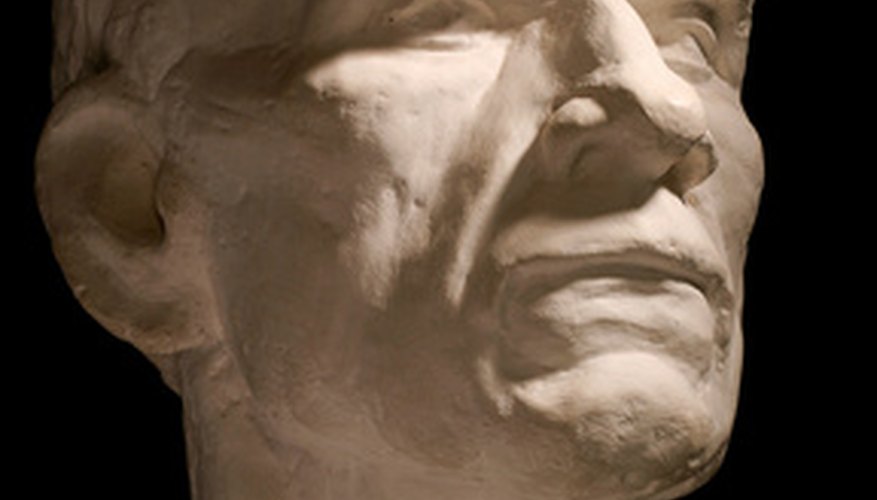At some point in every person's life, something gets broken.
If you break a statue or object made out of plaster, there are some simple things that you can do to repair the damage.
Even if you break the plaster piece into a million little pieces, it can be repaired with just a few simple items and a lot of time. The key is to gather up all of the broken pieces.
Glue all of the pieces back into position with school glue. Most people automatically think they need to grab the super glue, epoxy or hot glue, but the best glue to use on plaster or ceramics is plain-old, white school glue. It seeps into the pores on the plaster and ceramics and rebuilds the bond between the broken pieces. Glue the parts on carefully, and try not to leave a lot of gaps and cracks. Remember: Any cracks you leave will have to be smoothed out before you touch up the paint. This may require filling gaps, sanding and repainting areas. After you glue the parts together, you may need to tape parts in place until they dry. Once the parts dry, remove the tape and see if the sculpture looks acceptable. If it looks good, then you are done. If you see cracks, gaping holes or chips, move on to Step 2.
- At some point in every person's life, something gets broken.
- After you glue the parts together, you may need to tape parts in place until they dry.
Fill in any large gaps with tissue or paper towels loaded with glue. Make sure areas that have been filled are smooth. Gently, use your fingers to smooth the paper-filled areas. Fill in any small chips with toilet tissue loaded with glue. Allow the pieces to dry. If an area dries smooth, you are ready for Step 3. If an area dries rough, too high or bumpy, you will need to use sand paper to smooth it out. Make sure that you use fine sand paper, and work in small strokes. If the area is really small, you may want to use an emery board to file away the rough spots. If you have a gaping hole, glue a flat piece of paper towel across the inside of the hole, and let it dry. Put alternating layers of glue and paper towel until the hole is filled. Use small pieces of paper towel, and use a paint brush to paint the glue onto layers of paper towel. Basically, you're building a papier-mache layer to rebuild the open hole. Smooth the layer with fingers, and let it dry. Sand with sand paper or emery board.
- Fill in any large gaps with tissue or paper towels loaded with glue.
- If an area dries rough, too high or bumpy, you will need to use sand paper to smooth it out.
Paint layers of glue into fine lines and cracks. You may need to repeat this procedure several times smoothing the glue into the cracks with a paint brush or fingers to get it smooth. Filling fine lines, cracks and holes is time-consuming, but it has to be done to repair plaster. Sand any rough areas before moving on to the next step.
Once you have finished smoothing the piece, you will need to carefully repaint the sculpture. Use scrap paper to test your paint colours before you put it on the sculpture to avoid having to paint the whole sculpture. If the damage was really bad, you will probably have to repaint the whole sculpture. Try to carefully match the colours in each area, so that the piece will be the way you want it.
- Paint layers of glue into fine lines and cracks.
- Use scrap paper to test your paint colours before you put it on the sculpture to avoid having to paint the whole sculpture.
TIP
Tissue is finer than paper towels, so it gives a smoother finish. Use tissue for small holes and cracks. It is not good for filling gaping holes because it tears easily.
WARNING
If you are filling a large hole, let the first paper towel layer dry completely or it will tear when you add extra weight on top.
